|
Chorale Melodies used in Bach's Vocal Works
Herr Jesu Christ, dich zu uns wend |
|
Melody & Text | Use of the CM by Bach | Use of the CM by other composers |
| |
|
Melody & Text: |
|
The hymn, “Herr Jesu Christ, dich zu uns wend’,” was first published (stanzas i-iii) in Johann Niedling’s Lutherisch Hand-Büchlein (Altenburg, 1648). It was repeated, with the melody (supra) and the fourth stanza, in the Cantionale Sacrum (Gotha, 1651). The hymn is attributed, on inconclusive evidence, to William II, Duke of Saxe-Weimar. He was born in 1598, studied music, among other subjects, at Jena, fought in the Thirty Years’ War on the Protestant side, and died in 1662. The hymn is entitled “Frommer Christen Hertzens-Seufftzerlein umb Gnade und Beystand des Heiligen Geistes, bey dem Gottesdienst vor den Predigten” (A heartfelt petition of pious Christians for grace and the help of the Holy Spirit, during Divine Service before the sermon). It was in use in Saxony on all Sundays and festivals.
The melody (supra) attached to the hymn in 1651 is found three years earlier in an octavo volume published at Görlitz, entitled Pensum sacrum, Metro-Rhythmicum, CCLXVII Odis...denuo expansum expensumque Opera et Studio Tobiae Hauschkonii (1648), whose Appendix contains eighty melodies, without texts, suitable for the Latin odes in the volume. Among them (No. 45) is the melody printed supra. It occurs among several old hymn tunes, and, no doubt, dates from an older period than the volume in which it first appears. J.S. Bach’s text of the melody is invariable and follows the 1648 text except in the Choralgesänge, No. 139, where he follows Witt (No. 240) in a variation of the end of the second phrase of the tune.
Probably it is not an unrelated coincidence that the number of J.S. Bach’s Organ movements upon the melody equals the number of stanzas of the hymn. Their differing moods and appropriateness to a particular stanza support the assumption that J.S. Bach had the text of the hymn before him and followed it closely. The four movements are discussed in the order of their assumed association with the hymn text (see below under Untexted).
Source: Charles Sanford Terry: Johann Sebastian Bach, Bach’s Chorals, vol. 3 The Hymns and Hymn Melodies of the Organ Works [1921], pp 176-180 |
|
The sermon in the vespers was preceded by the traditional pulpit hymn, "Herr Jesus Christ, dich zu uns wend," NLGB 314, Word of God & Christian Church (https://books.google.com/books?id=UmVkAAAAcAAJ&pg=PA817#v=onepage&q&f=false) in four 4-line (AABB) stanzas of Wilhelm II Duke Sachsen–Weimar (Görlitz 1648). It is based on the anonymous Pensum sacrum to the associated melody (Zahn 624, Gochsheim/Redwitz 1628) set as a plain chorale, BWV 332 http://www.bach-chorales.com/BWV0332.htm, https://www.youtube.com/watch?v=Vn3LSgEUZeg
"Herr Jesus Christ, dich zu uns wend" was the pulpit hymn sung at all main and vesper services in Leipzig says Stiller (Ibid.: 124, 258). It also is found in the Schmelli Gesangbuch (Leipzig 1736) as No. 375, Trinity Sunday. The stanzas of "Herr Jesus Christ, dich zu uns wend" are summarized as follows: 1. invocation asking Jesus to send the Holy Spirit; 2. requesting increased faith; 3. seeing the end of time with Jesus in everlasting happiness (references, Isaiah 6:3 and Revelation 4:8 (Sanctus), and Revelation 22:3-4(God's countenance), and 4. Trinitarian doxology, says Anne Leahy. This is a chorale of joy celebrating the salvation of mankind, culminating in the eschatological Stanza 3. It is known in English as "Lord Jesus Christ, be present now!" (Catherine Winkworth, https://hymnary.org/text/lord_jesus_christ_be_present_now) in the current Lutheran Worship, No. 527, Gathering.
Source: Good Friday Chorales (William L. Hoffman, March 31, 2018) |
|
Melody: Zahn 624
Composer: Anon (Pensum sacrum, Görlitz (1648), based on an earlier melody (Gochsheim/Redwitz, 1628) |
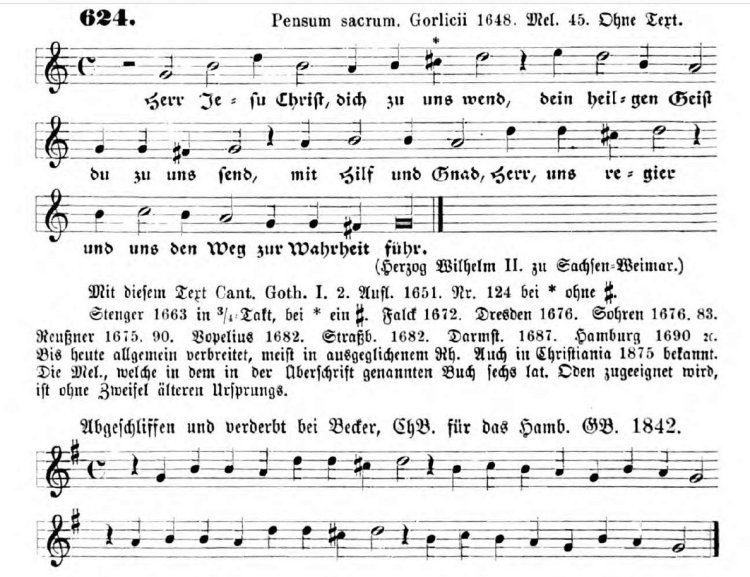 |
|
Text: Herr Jesu Christ! dich zu uns wend (NLGB 314; GH 240; KELG 2)
Author: Wilhelm II Duke Sachsen–Weimar (Lutherisch Hand-Büchlein, Altenburg, 1648) |
|
Hymnal versions Bach may have known: |
|
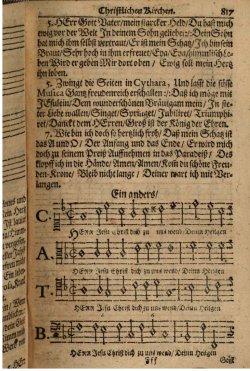
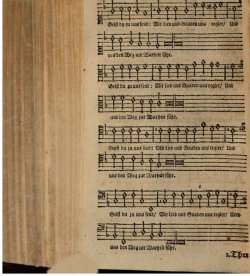
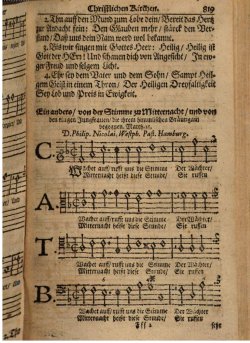
|
|
Melody & text of Herr Jesu Christ, dich zu uns wend (NLGB 314) from the Neu Leipziger Gesangbuch, pp 817-819 |
|
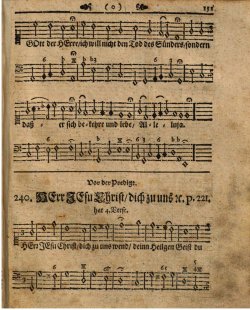
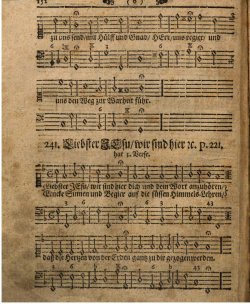
|
|
Melody of Herr Jesu Christ, dich zu uns wend (GH 240) from the Gotha Hymnal (1715), pp 151-152 |
| |
| |
|
Use of the Chorale Melody by Bach: |
|
Text: Herr Jesu Christ! dich zu uns wend |
|
Chorale Herr Jesu Christ, dich zu uns wend, BWV 332
Ref: RE 136; Breitkopf 136; KE 139; Birnstiel 140; AmB 46II p.79 & p.110; Penzel 101; BGA 79; BC F85.1; CST 142 |
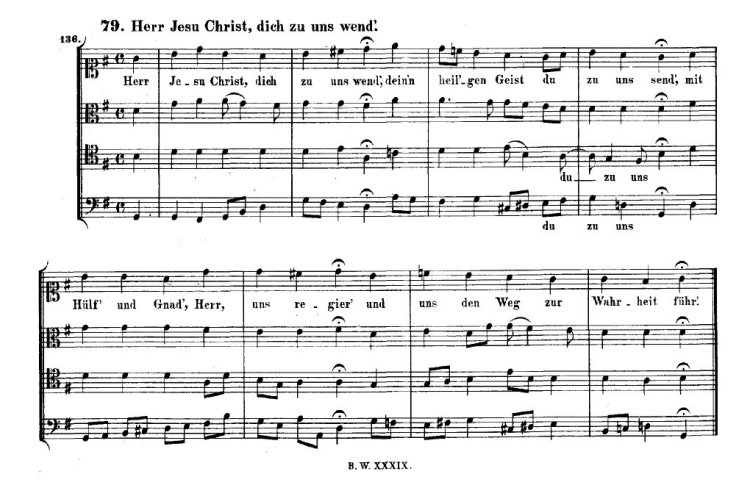 |
|
Untexted: |
|
Chorale Prelude Herr Jesu Christ, dich zu uns wend (I), BWV 632 (1713-1715) |
|
Throughout the Orgelbuchlein, Schweitzer supposes, J.S. Bach employs a motive derived from the Choral only “when there is a meaning in the repetition of the words.” If that is so, he brings out conspicuously here the words “Herr Jesu Christ” in imitation throughout the movement, an emphasis of the initial invocation which would not appear to be demanded.
J.S. Bach set the melody as a chorale prelude in the Orgelbüchlein (Ob. 49, Pentecost), BWV 632 (https://www.youtube.com/watch?v=PYWIp9YzMsc). |
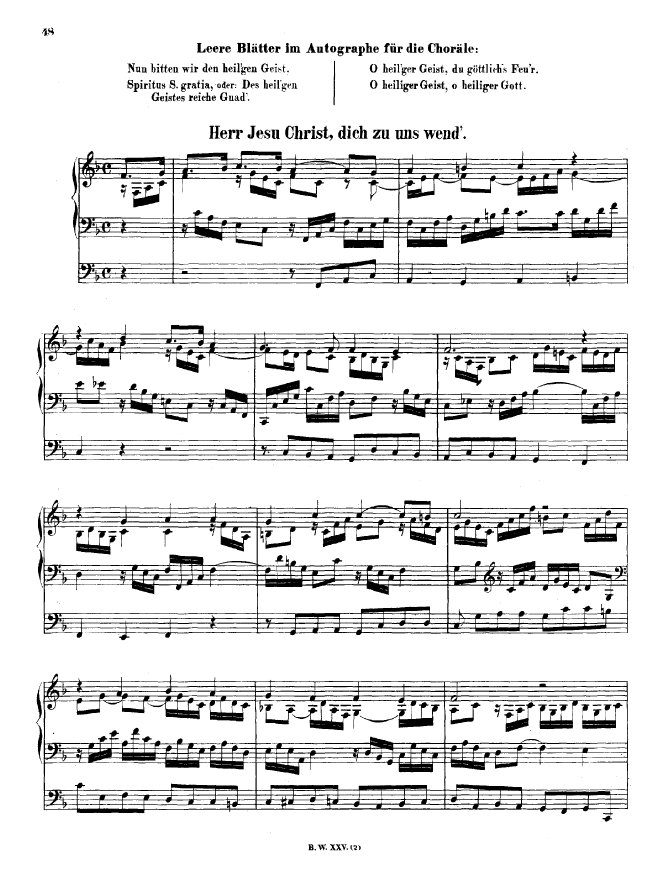
 |
|
Chorale Prelude (Trio super) Herr Jesu Christ, dich zu uns wend (I), BWV 655 (before 1723) |
|
The movement is one of the Eighteen Chorals, a Trio upon the melody, jubilant in mood and attuned to the third stanza of the hymn:
Till we with angels join to sing
Eternal praise to Thee, our King;
Till we behold Thy face most bright,
In joy and everlasting light.
Spitta points out1 that J.S. Bach follows Johann Pachelbel here in forming a theme out of the opening phrase of the cantus and, after developing it adequately, bringing in the complete melody on the Pedal. A Fugue upon “Allein Gott in der Höh’ sei Ehr’ ” (N. xviii. 7) shows similar treatment.
Peters’ Edition (P. vi. 107, 108) prints two older readings of the movement, the first of which exists in a ms. in Oley’s hand, and the second is among Johann Ludwig Krebs’ mss. The Berlin Royal Library has a third ms. of the movement (B.G. xxv. (2) 160) of recent and minor authority.
J.S. Bach set the melody as a "Great 18" trio setting, BWV 655a in Weimar and BWV 655 in Leipzig, as well as Kirnberger chorale, |
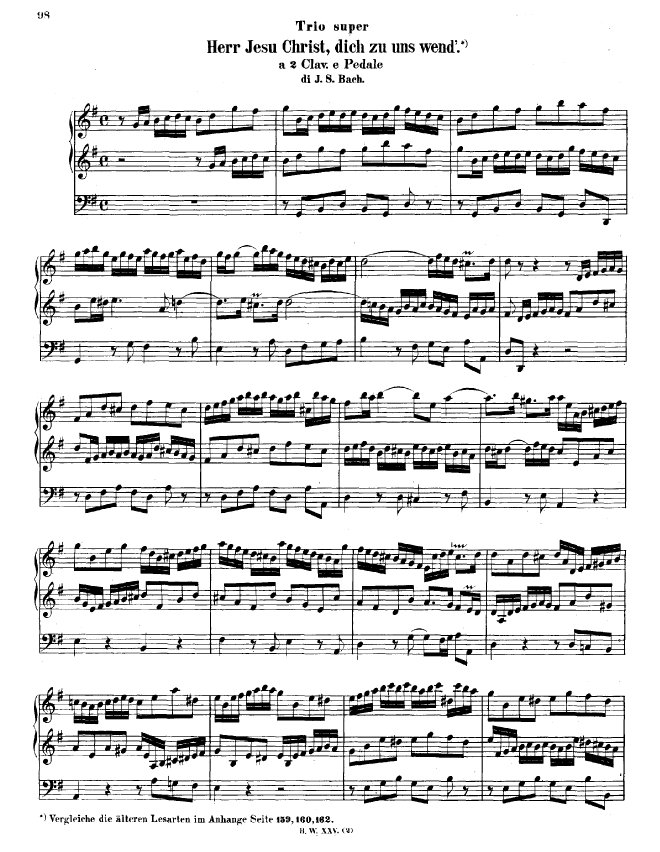

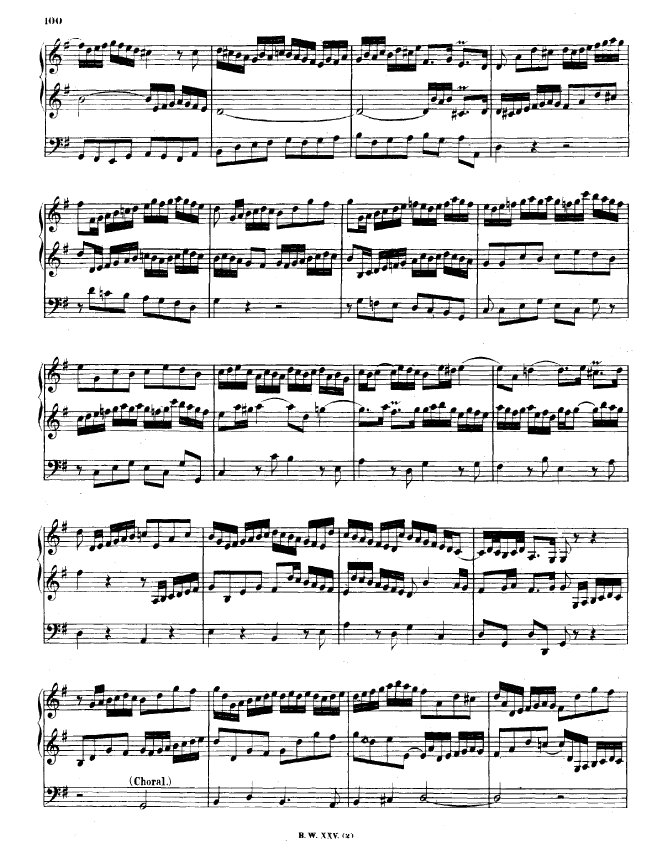
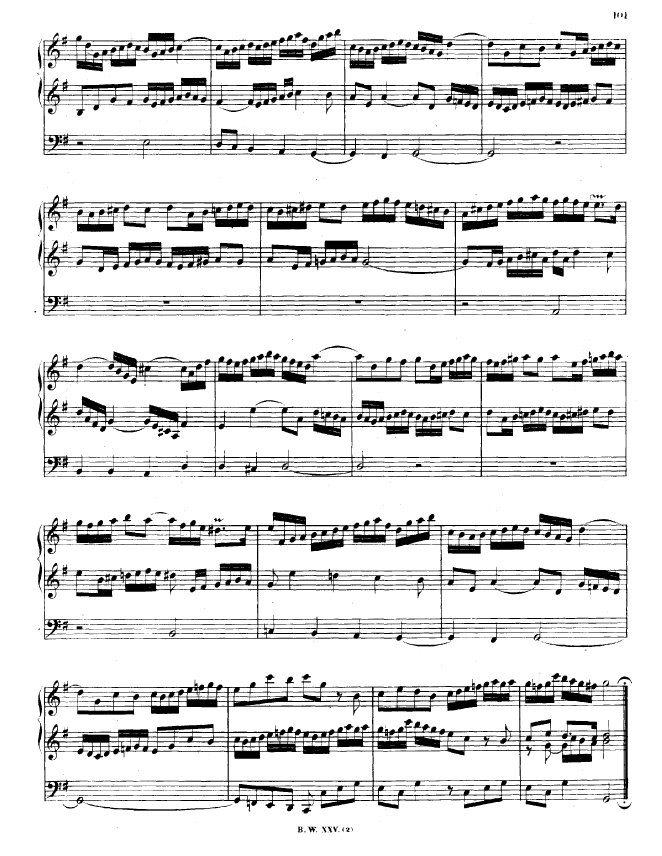 |
|
Chorale Prelude Herr Jesu Christ, dich zu uns wend (II), BWV 709 (1708-1713) |
|
N. xviii. 50. The movement, one of the miscellaneous Preludes, is quiet and reflective in mood. The undulations of melodic treatment permit the conjecture that J.S. Bach had in mind the words of the second stanza:
Lord, lead us in Thy holy ways.
Eight mss. of the movement are extant, in the Kirnberger and Voss Collections and elsewhere.
J.S. Bach set the melody as a chorale prelude BWV 709 (https://www.youtube.com/watch?v=lReQrnXydtM). |

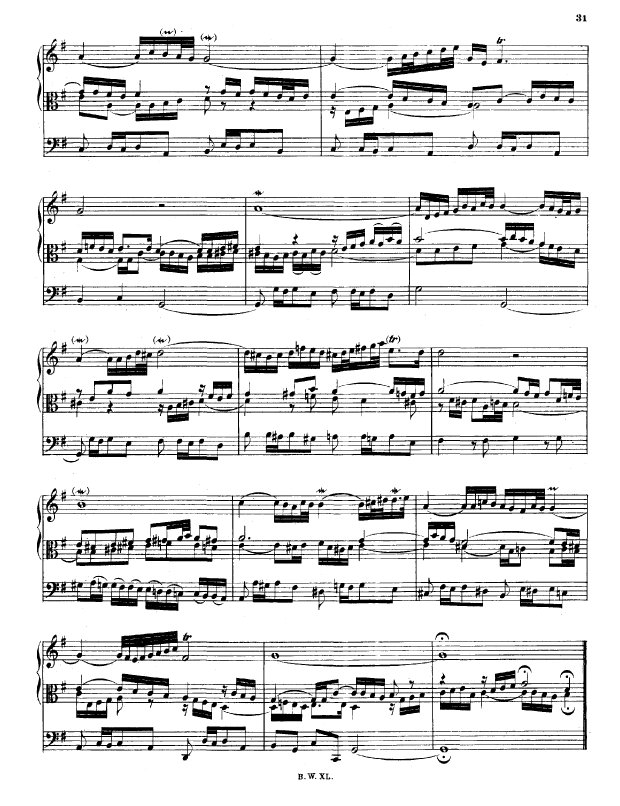 |
|
Chorale Prelude Herr Jesu Christ, dich zu uns wend (III), BWV 726 (after 1726) |
|
N. xviii. 52. An Organ accompaniment of the tune. Parry suggests that the movemen, like others of its kind, was written for the instruction of “some insufficiently discreet or experienced performer.” It is not extravagant to hold the movement inspired by the fourth stanza of the hymn:
Be honour, praise, and glory given
By all on earth and all in heaven.
The ms. of the movement is among the Kellner mss. in the Berlin Royal Library.
J.S. Bach set the melody as a chorale prelude in Miscellaneous chorales, BWV 726 (https://www.youtube.com/watch?v=3LVm8Fl33jY), |
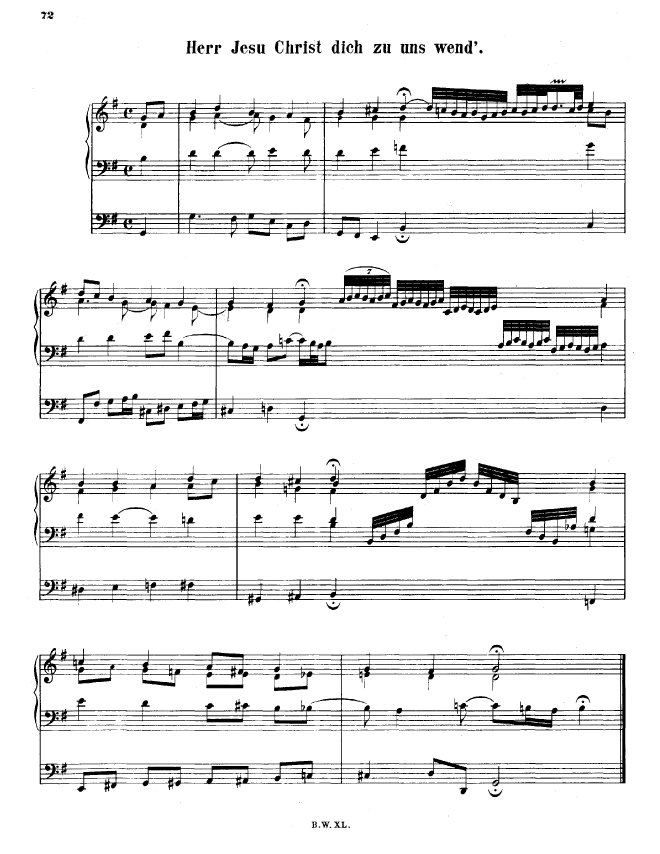 |
|
Chorale Prelude Herr Jesu Christ, dich zu uns wend (IV), BWV 749 (before 1700) |
|
J.S. Bach set the melody as a chorale prelude in Miscellaneous chorales 749 (https://www.youtube.com/watch?v=XLy_LArsjJ4).
BWV 749 was not included in the BGA. According to Malcolm Boyd: Bach, this work is not by J.S. Bach. |
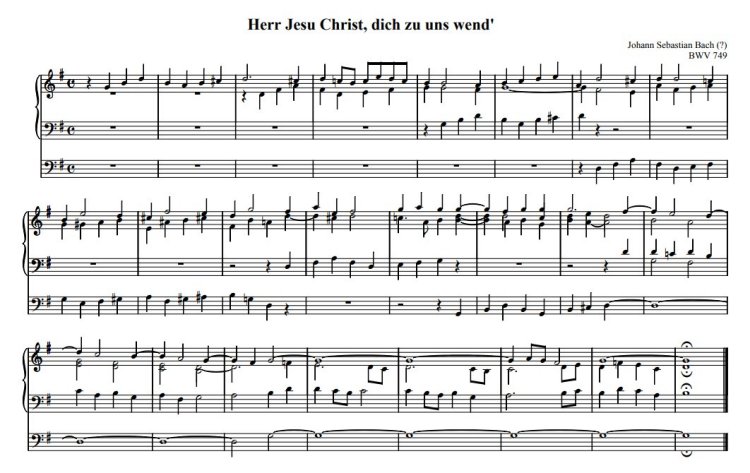 |
|
All J.S. Bach settings of this melody can be heard at https://www.youtube.com/watch?v=PYWIp9YzMsc. |
| |
|
Use of the Chorale Melody by other composers: |
|
Other composers settings include Georg Böhm's chorale partita variations (https://www.youtube.com/watch?v=GNkb1--S-ZM), Johann Gottfried Walther (https://www.youtube.com/watch?v=E6eGCuLiovM), and Johann Ludwig Krebs |
| |
| |
|
Sources: Bach Digital; BGA; Zahn; BCML discussions on BCW; Charles Sanford Terry's Bach Chorals books
Photos from Gottfried Vopelius: Neu Leipziger Gesangbuch (Vopelius 1682) & Christian Friedrich Witt: Psalmodia Sacra, Oder: Andächtige und schöne Gesänge… (Gotha Hymnal, 1715), were taken from digital copies of the books downloaded from Bayerische Staatsbibliothek München. These copies are Out of copyright - non commercial re-use (Europeana Rights).
Prepared by Aryeh Oron (October 2018) |